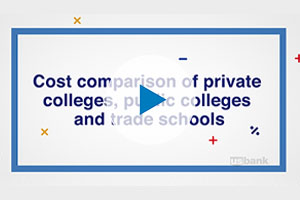While federal relief funds helped boost local government budgets post-pandemic, inflation, higher labor costs, and global instability continue to affect the U.S. economy. In higher education, falling enrollment and rising tuition are driving budgetary shortfalls that negatively impact institutional ability to hire talent, expand research, and teach the workforce of tomorrow.
The pandemic accelerated a massive shift to digital payments in the private and public sector. As more citizens have adapted to using digital options for everyday business transactions, they expect local governments to keep up with available technology.
Service fees are part of that transformation. When an organization adds them to certain payment acceptance environments, it can help organizations afford technology upgrades that improve overall user experience, timely payments, and budget forecasting. And innovation that creates cost efficiencies and boosts revenue collection can build more engaged, resilient public sector entities.
What's a service fee? Essentially, it's a flat or percentage-based fee on transactions paid with methods other than cash or check. Public sector organizations can add service fees to all non-cash payment methods, including in-person payments. Beneficially, there is enough flexibility in the way you can structure your service fee model that you can tailor your implementation to fulfill your organization’s unique needs.
Here are three additional reasons to integrate service fees into your transaction acceptance methods.
1. Offset costs of accepting payments
Because public sector organizations and higher ed institutions operate with budgets funded by taxes, federal dollars, utility charges, grants, and endowments, optimizing payments acceptance is critical. According to our recent study, credit card fees are the third largest business expense after labor and rent. Controlling payment acceptance costs—and being able to forecast future savings—can help your organization operate efficiently.
Service fees are revenue neutral and carry no set cap restrictions so you can leverage a fee amount or percentage that fits your organization’s cost model. With other fee models, there are more stringent operational restrictions. An example would be the convenience fee model for which you can only apply fees in an alternative channel that provides extra convenience, such as paying online rather than in person or by mail. Our team can help you navigate the nuances between the models so you can implement a program that meets your needs.
2. Affordable way to expand payment acceptance
Besides helping control costs, service fees help you meet shifting consumer payment preferences. According to our recent report, consumers significantly prefer physical card (68%) and contactless card (62%) payments to cash (48%) or check (21%).
One survey shows that digital payment options are the new norm; 90% of respondents used some form of digital payment in the last year and 73% bought or paid for services through a website or browser, whether on a computer, tablet or phone during that time. But our survey shows that government lags other industries in with only 22% of leaders saying they employ advanced payment strategies, compared to 39% in retail and 28% overall across industries.
And, some constituents still prefer to pay by mail, so finding a payments program that can be accessible to all is critical. According to Springbrook Software, within the last year 34% of respondents had paid a government bill via postal mail.
3. Improve efficiency and customer experience
Citizens and students rely on the vital services that government agencies and higher ed provide. Finding ways to improve payments can help drive consistent revenue collection and free up staff to devote more time to providing the services at the core of that organization's mission. In today's digital world, time-crunched and tech-savvy people are willing to pay to get things done faster–and understand service fees as a convenience cost that saves them time standing in line or taking time off to go to the DMV or the registrar. According to PYMNTS.com, 79% of consumers say service fees on transactions don't negatively impact their view of the organization, and 85% pay service fees without issue.
Service and convenience fees are valuable tools to help your organization to operate more efficiently and create a better customer experience so your organization can invest more time and effort in helping the communities it serves.
If you’re looking for solutions that help you cut costs today while making strategic investments for tomorrow, learn more about how service and convenience fees can help.






































